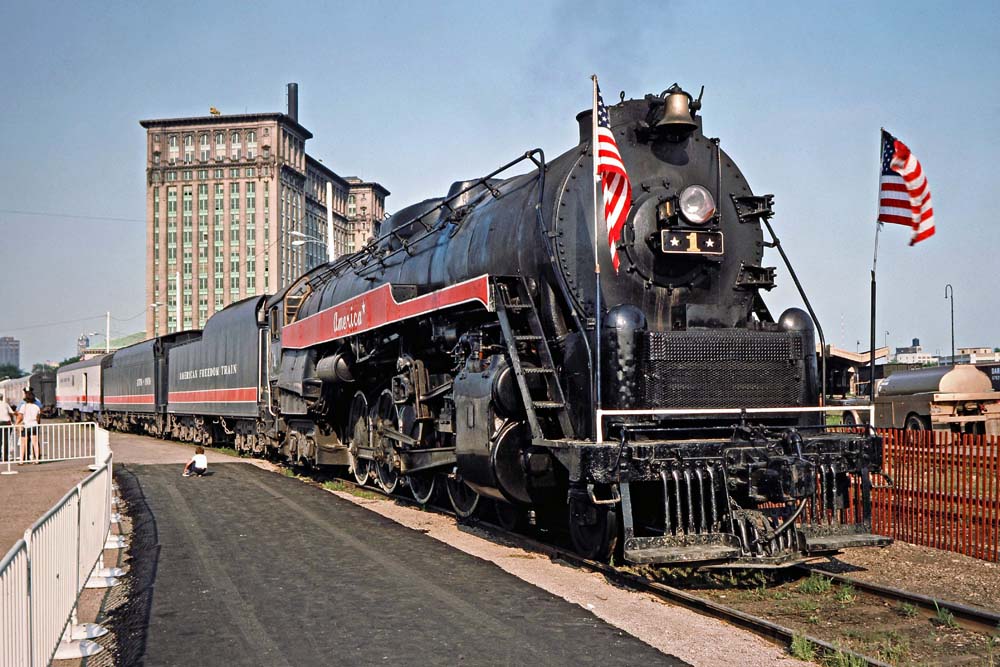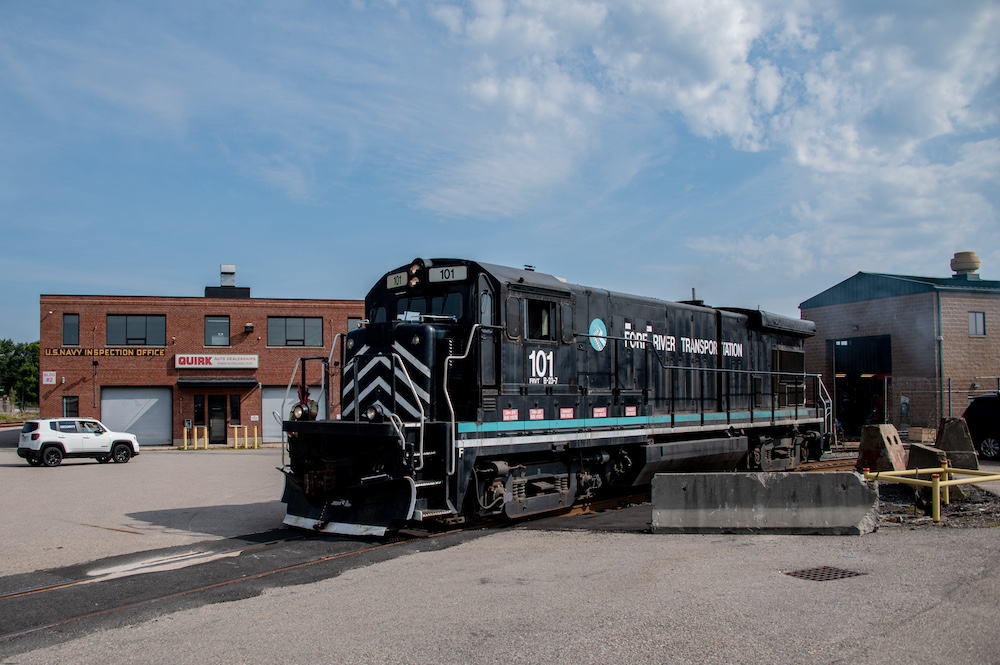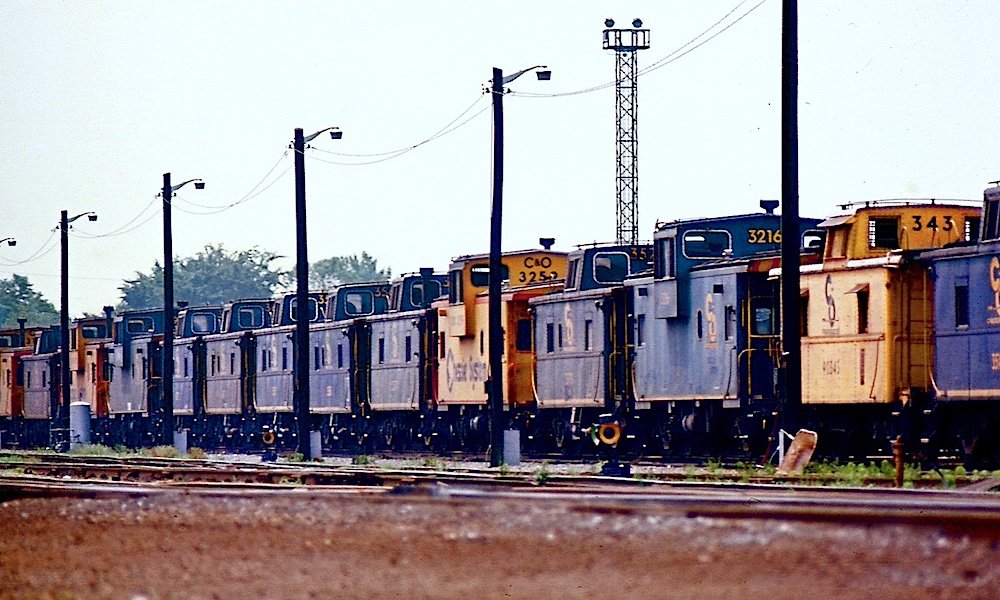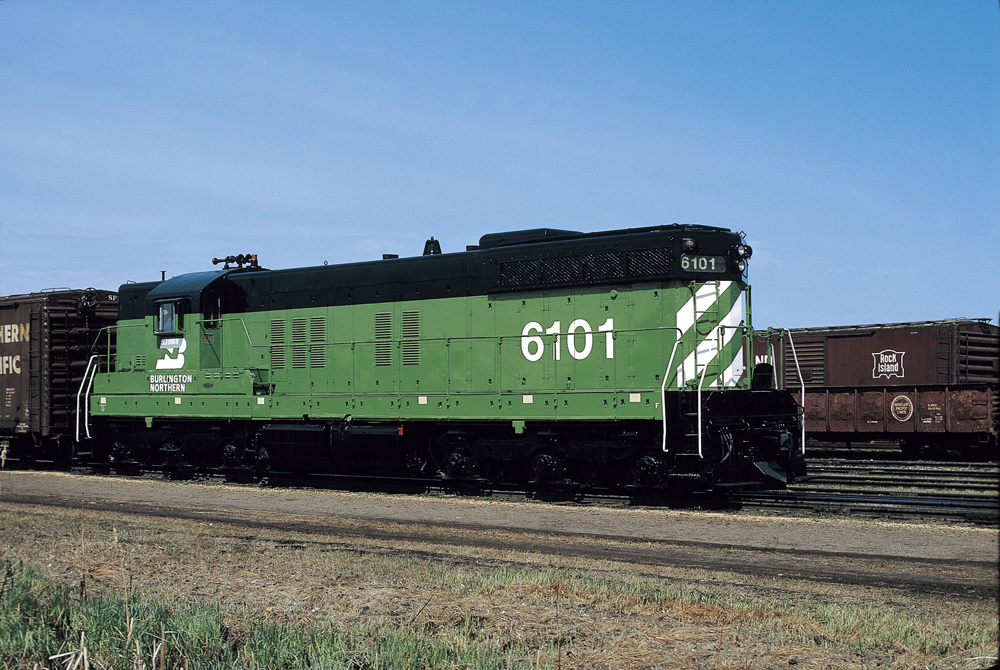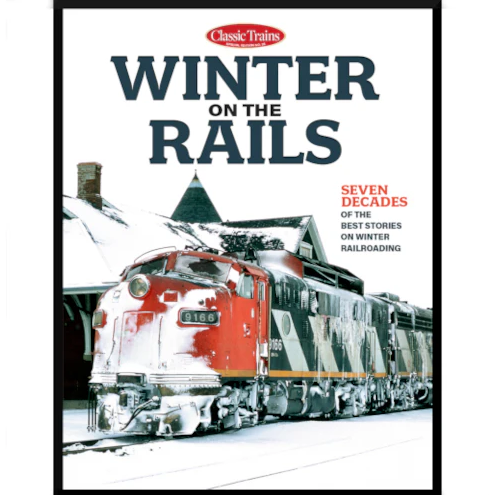Although a latecomer to the hood unit market, EMD became the dominant builder of road switchers with the GP7. Dynamic brakes are indicated by a protruding housing (“blister”) with grids atop the middle of the long hood, with rooftop cooling fans above it. The radiators are at the end of the hood, with an intake grille or louvers on each side and fans (varying in size and number) on the roof above it. Electro-Motive model designations have always been rather vague. Four-axle road switchers are GPs (for “general purpose”), and were eventually nicknamed “Geeps.” Six-axle road switchers are SDs (which originally stood for “special duty.”)
GP35: 1,333 units (best-selling model of second-generation Electro-Motive diesel locomotives)
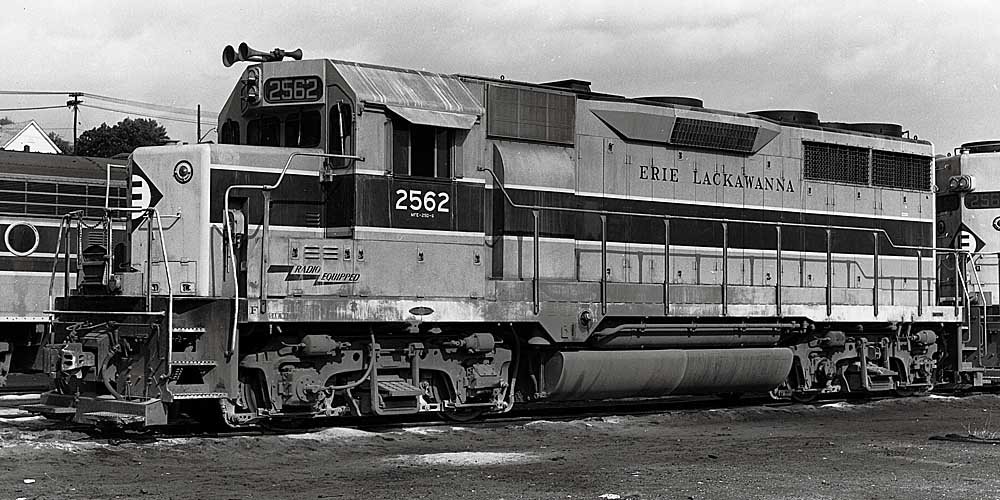
With the 1963 introduction of the GP35, EMD finally matched the 2,500 hp of GE’s U25B. The GP35 introduced the basic cab, nose, and body style that would be used on EMD diesels through the 1980s, with an angled cab roof and two-piece windshield above the low nose. The GP35 can be spotted by its two large (48-inch) radiator fans bracketing one small (36-inch) fan at the rear of the roof, and by its single turbo exhaust stack. As with the GP30, some GP35s were equipped with AAR type B trucks from traded-in Alcos (Ann Arbor and Southern). One option was a large (3,000-gallon) fuel tank; these locomotives (Chicago & North Western and St. Louis-San Francisco) had their air reservoirs on the roof. High-nose versions were purchased by National of Mexico (also the only GP35s with steam generators), Norfolk & Western, and Southern.
GP35 buyers: Alaska, AA, AT&SF, B&O, CN, CP, C&O, C&EI, C&NW, CB&Q, CRI&P, D&RGW, DT&I, EL, GN, GM&O, L&N, MILW, MP, NdeM, NYC, N&W, NKP, PRR, RDG, RF&P, SCL, Soo, SP, SSW, SOU, SLSF, T&P, TP&W, UP, WAB, WM, WP
GP40: 1,243 units
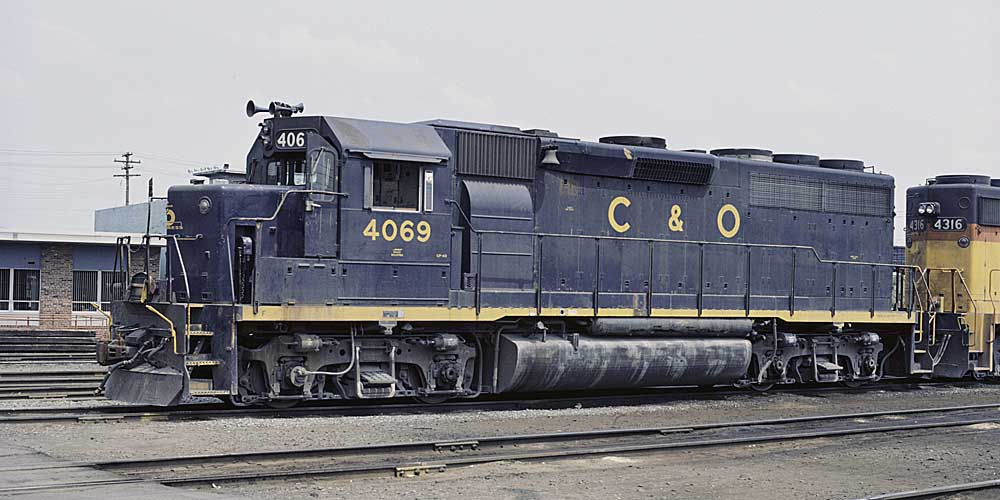
EMD introduced its new, larger 645 engine in the 3,000-hp GP40, and the locomotive would prove popular for fast-freight service. The GP40 can be identified by its three large (48-inch) radiator fans at the rear of the roof. Early units had “button-top” fans, with circular plates in the middle; later engines had all-open fans. Three fuel tank options were available. Early models had screen-covered radiator openings, and later units had wire grids. Very late GP40s had the option of extended-range dynamic brakes, which allow braking at lower speeds than standard dynamics. These are marked by a small door at the front of the dynamic brake housing. Late GP40s have an electrical cabinet air filter box on the walkway behind the left side of the cab. Norfolk & Western GP40s have high noses.
GP40 buyers: A&WP, ACL, B&O, C&O, CB&Q, CRI&P, ChP, CN, D&E, D&RGW, DT&I, FEC, GRR, IC, L&N, MILW, MKT, NdeM, N&W, NYC, PC, RF&P, SAL, Soo, SSW, TO&E, WofA, WM, WP
SD40: 1,275 units (best-selling model of six-axle second-generation Electro-Motive diesel locomotives)
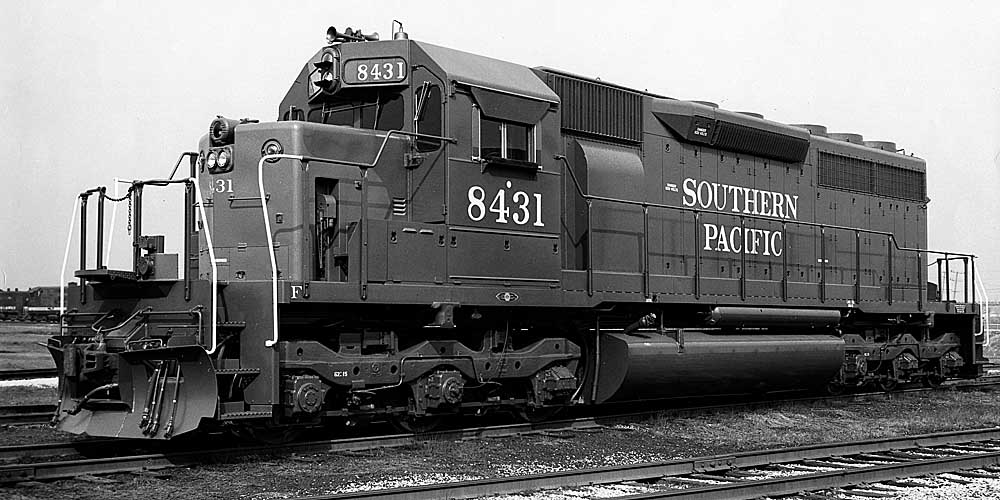
The 3,000-hp SD40 popularized the use of high-horsepower, six-axle units on fast freight trains as well as heavy-haul drag freights. As with the SD38, the SD40 was built on the long underframe of the SD45. The resulting open areas on the end platforms, although not as large as on the later SD40-2, give the engine a distinct look. The SD40 has three radiator fans at the end of the roof, with fan changes during production as with the GP40. Most were equipped with dynamic brakes, with extended-range versions marked with an access door on the blister. Norfolk & Western and Southern models have high noses.
SD40 buyers: AC, A&SAB, AT&SF, BN, B&O, CN, CP, CGW, C&NW, C&O, C&S, CRR, DE, GM&O, GTW, IC, KCS, L&N, MP, NdeM, N&W, PC, PRR, QNS&L, Soo, SOU, SP, UP, WM
SD45: 1,260 units (highest-horsepower of second-generation Electro-Motive diesel locomotives)
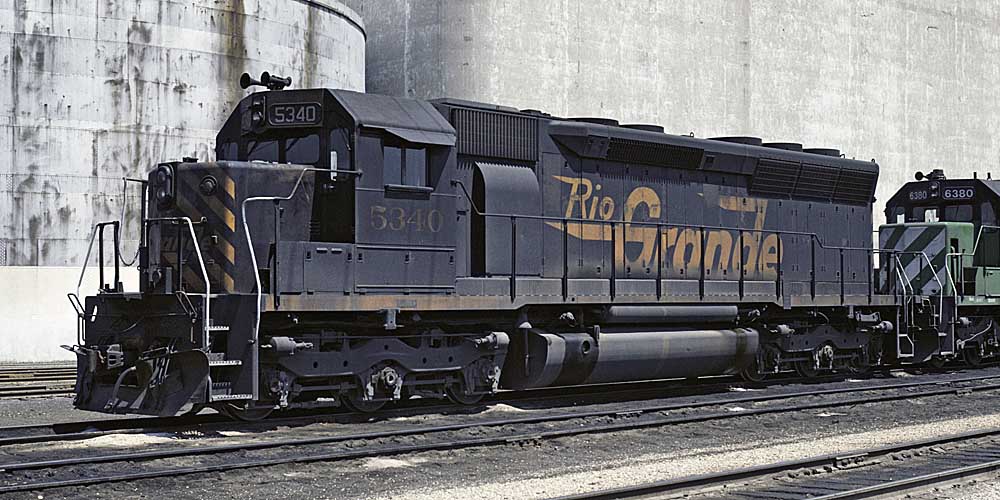
To make the SD45, EMD built a 20-cylinder version of the 645 engine and turbocharged it, providing 3,600 hp, the most powerful single-engine C-C locomotive when introduced in 1966. Produced concurrently with the SD40, the SD45 has a longer body but rides on the same frame. The SD45 is distinguished by its flared (outwardly tapering) radiator grilles at the rear of each side, needed to make room for the larger radiator core and extra cooling capacity required by the bigger engine. Several SD45s were delivered with an optional L-shaped windshield on the engineer’s side. Norfolk & Western (see page 255) and Southern engines have high noses. Frisco’s SD45s have smaller (3,600-gallon) fuel tanks than all others (4,000-gallon).
SD45 buyers: AT&SF, ACL, BN, C&NW, CB&Q, C&S, D&RGW, EL, GN, MILW, NP, N&W, PC, PRR, RDG, SCL, SLSF, SOU, SSW, SP, UP






